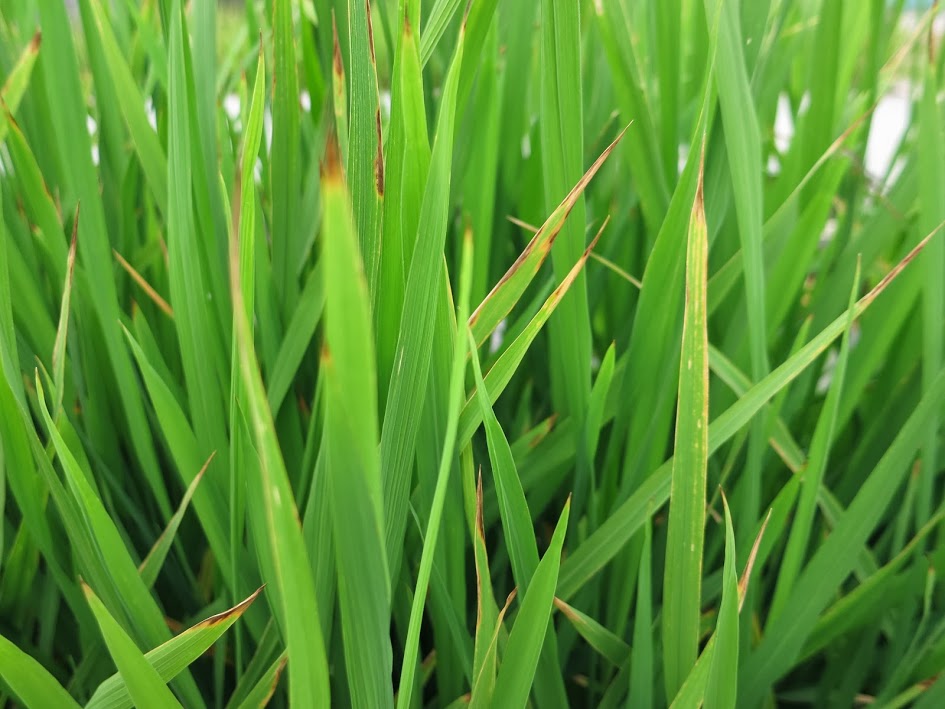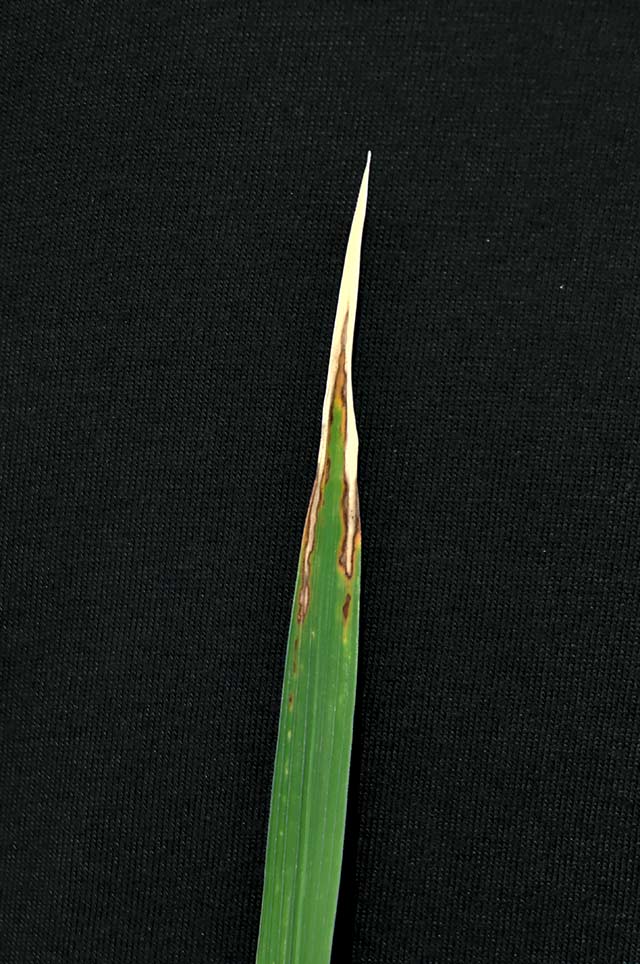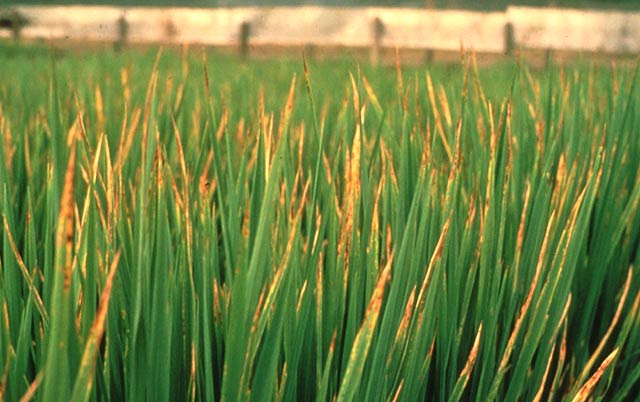Boron (B) toxicity
 What it does
What it does
Boron (B) toxicity inhibits the formation of starch from sugars and affects the formation of B-carbohydrate complexes.
Why and where it occurs
Boron toxicity is a rare condition that usually occurs during dry season when there is high B content in groundwater.
It can be caused by
- large B concentration in soil solution because of the use of B-rich groundwater and high temperature (e.g., in arid regions, very deep tube wells, or wells in areas affected by geothermal activities)
- large B concentration in soil solution because of B-rich parent material. B content is high in some marine sediments, plutonic rocks, and other volcanic materials (e.g., tuff), but the content in igneous rocks is low, and
- excess of borax or large applications of municipal waste (compost).
B toxicity is most common in arid and semiarid regions, but has also been reported in rice in other areas. Soils prone to B toxicity include the following types:
- soils formed on volcanic parent material, usually associated with the use of irrigation water pumped from deep wells containing a large B concentration (e.g., IRRI farm, Los Baños, and Albay, Philippines)
- some coastal saline soils
How to identify
Plants affected by B toxicity exhibit
- chlorosis of tips and margins of older leaves as initial symptoms
- dark brown elliptical spots on discolored areas two to three weeks later followed by browning and drying up
- necrotic spots prominent at panicle initiation
- brownish leaf tips and dark brown elliptical spots on leaves
To confirm B toxicity damage, bring soil and plant sample to the laboratory for testing.
Why is it important
Boron toxicity is relatively rare, especially in irrigated rice systems. However, its damage is important throughout the growth cycle of the rice crop.
How to manage
The general measures to prevent B toxicity are as follows:
- Plant B-toxicity tolerant varieties (e.g., IR42, IR46, IR48, IR54, IR9884-54). B-toxicity tolerant varieties can yield up to 2 t ha-1 more than susceptible varieties.
- Use surface water with a low B content for irrigation. Groundwater must be monitored regularly if used for irrigation.
- Plow when the soil is dry so that B accumulates in the topsoil. Leach with water containing a small amount of B.









